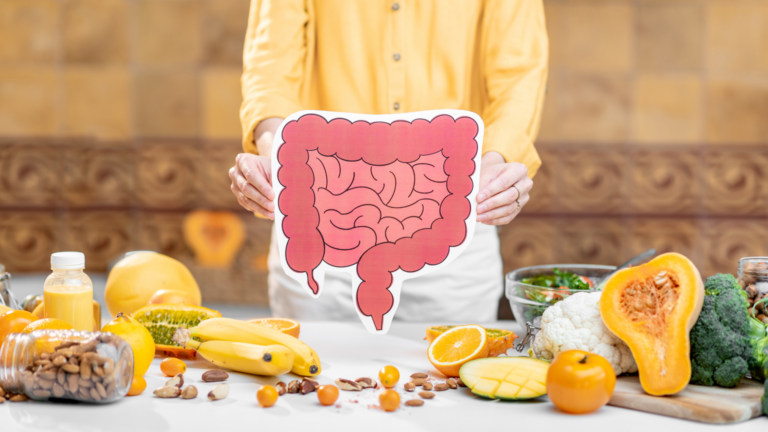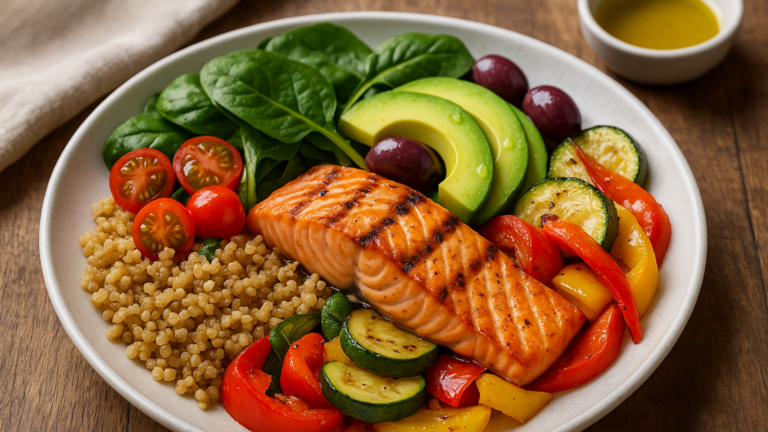Have you heard of oxalates, lectins or phytates? These so called “anti-nutrients” are compounds in foods that can bind to minerals and block nutrient absorption, while some claim they may cause digestive symptoms. Sounds scary right? Especially when these compounds are found in healthy foods like beans, whole grains and green leafy vegetables. If your confused by this, you’re not alone. But don’t throw away your chickpeas just yet. Let’s unpack what science actually says about the anti-nutrients.
This article is going to cover:
- What are anti-nutrients?
- Oxalates
- Lectins
- Phytates
- How does food preparation impact anti-nutrients?
- Are anti-nutrients a health concern?
- Do anti-nutrients cause gut symptoms?
What are anti-nutrients?
Anti-nutrients (oxalates, lectins, phytates) are found in a range of plant foods, and with good reason. They protect the plant. Like animals and humans, plants also want to ensure their own survival. This means they don’t actually want us to eat them. Since plants can’t just pick up and run away, they have to come up with other ways to protect themselves. To this end they produce a range of different chemicals and antinutrients as a protective mechanism. These antinutrients may taste bitter, be difficult to digest, interfere with absorption of other nutrients or even make the “predator” (animal or human) feel sick or unwell.
Oxalates
Found in in green leafy vegetables, tea, beans, nuts, and beetroot. They appear to bind to calcium and other minerals, preventing them from being absorbed. In addition, oxalates have also been correlated with increases in kidney stones. However, this only seems to happen when a person’s diet is low in calcium and when calcium needs are met, there is no increased risk of kidney stones from oxalates. Interestingly, a balanced vegetarian diet which is typically high in oxalates, has been found to be one of the most useful diets for prevention of kidney stones. Boiling foods that contain oxalates for as little as 12 minutes has been shown to reduce oxalate content of foods by up to 87%. While soaking has been shown to decrease oxalates by up to 77%.
Lectins
Found in nuts, cereals and legumes. Lectins can interfere with the absorption of calcium, iron, phosphorous and zinc. In extremely high doses, animal studies have shown they may interfere with the integrity of the gut lining. However, diets high in nuts, cereals and legumes have been studied at length in humans with no negative effects. And diets that are high in lectin containing foods (e.g. the Mediterranean diet and DASH diet) have long been associated with improved gut health, decreased inflammation and decreased risk of chronic disease. Boiling, steaming, fermenting or sprouting foods that contain lectins has been shown to decrease lectin content by up to 94%.
Phytates
Found in seeds, nuts, whole grains and legumes can block the absorption of iron, zinc, magnesium and calcium. However, when dietary patterns are studied as a whole, no negative effects have been observed from high phytate consumption. In addition, fibre and vitamin C have been shown to counteract the negative effects of phytates on the absorption of nutrients. Cooking (steaming or boiling) soaking, fermenting or germinating, foods that contain phytates has been shown to decrease phytate concentration by up to 80%.
Preparing foods with antinutrients.
How you prepare foods and how they fit into your diet can affect if antinutrients will be an issue for you or not. The following preparation methods has been shown to significantly reduce the concentration of antinutrients in foods that contain them.
Antinutrients | Foods sources | Reduce antinutrients by |
Oxalates | Green leafy vegetables (spinach, chard, kale), tea, beans, nuts, and beetroot | Soaking & boiling |
Lectins | Nuts, cereals and legumes | Soaking, boiling & fermentation |
Phytates | Seeds, nuts, whole grains and legumes | Soaking, sprouting & fermentation |
Are antinutrients a health concern?
The pros and cons of diet is an area of ongoing research. More often than not, nutrition is a balancing act. Most foods will have both positive and negative health effects. And if something is a concern depends on your own health needs and how much of it you consume. In many cases, a food can be healthy in reasonable serves and only become problematic if you go overboard. The “poison is in the dosage” so to speak.
There has been a lot of research into nutrition and its relationship to chronic diseases. We have Mediterranean diets, the DASH diet and vegetarian diets which are all high in plant foods containing oxalates, lectins and phytates. However, all of these diets are shown to be associated with long term health and well-being as well as decreased risk of chronic diseases. Although, antinutrients can interfere with absorption of certain nutrients, it appears that when put into context of diet as a whole, they don’t have any negative effects. Indicating that the balance, framework and “food matrix” is more important than focusing on individual foods.
In addition, a review completed in 2014 looked at 304 meta-analyses and systematic reviews published over 63 years. The standout finding of this review was that plant-based foods that are high in oxalates, lectins and phytates, are protective against diet related chronic diseases, including diabetes and heart disease. While animal-based diets that are low in oxalates, lectins and phytates are associated with increased risk of inflammation and chronic disease.
If you do have concerns about specific nutrients like iron, calcium or zinc and want to err on the side of caution, you may consider separating certain foods. For example, if your iron is low, you could snack on nuts (oxalates, lectins & phytates) between meals and eat your high iron foods at main meals. This prevents interference with iron absorption, but still maintains a healthy diet with a variety of foods.
Do antinutrients cause gut issues or other symptoms?
Food sensitivity is highly individual. What is problematic for one, will be well tolerated by another. For example, high FODMAP foods may increase bloating in one person, while in someone else make no noticeable difference, even when they are digested in the same way. It’s also important to note that current scientific knowledge of food sensitivity is evolving and we are only beginning to scratch the surface. While it’s possible that compounds like oxalates, phytates and lectins may induce gut symptoms in some people, we also know that food preparation methods (cooking, soaking, sprouting and fermenting) can significantly reduce their levels. If you suspect they affect you, consider adjusting how you prepare plant foods. As a dietitian who specialises in food sensitivity, I can help you through this process and help you minimise symptoms while still maintaining food variety.
Take home message.
Antinutrients can interfere with absorption of certain nutrients. However, when put into context of a balanced diet and food preparation, they don’t appear to negatively impact long term health and well-being. In fact, diets rich in plant foods are consistently associated with better overall health, improved gut function, reduced inflammation and lower risk of chronic disease. The benefits of these foods far outweigh any potential negatives.
While in exceptionally high doses, antinutrients have been shown to affect the gut lining of rats, these doses were well beyond what is seen in a person’s regular diet. In addition, we are not rats and this may not even apply to us at all. Fortunately, cooking, fermenting, soaking and sprouting are all simple ways to reduce the amount of phytates, oxalates and lectins in your meals.
If you’re concerned about how these compounds might be affecting you, you don’t need to cut them out. Instead, cook your legumes, sprout your nuts, ferment your bread, and steam your greens. And if you’re looking for personalised guidance, book an appointment and I will help you build a varied, satisfying, and gut-friendly way of eating.
References:
- https://www.sciencedirect.com/science/article/pii/S1756464622000081
- https://onlinelibrary.wiley.com/doi/10.1111/nure.12153
- https://www.ncbi.nlm.nih.gov/pmc/articles/PMC6927693/







